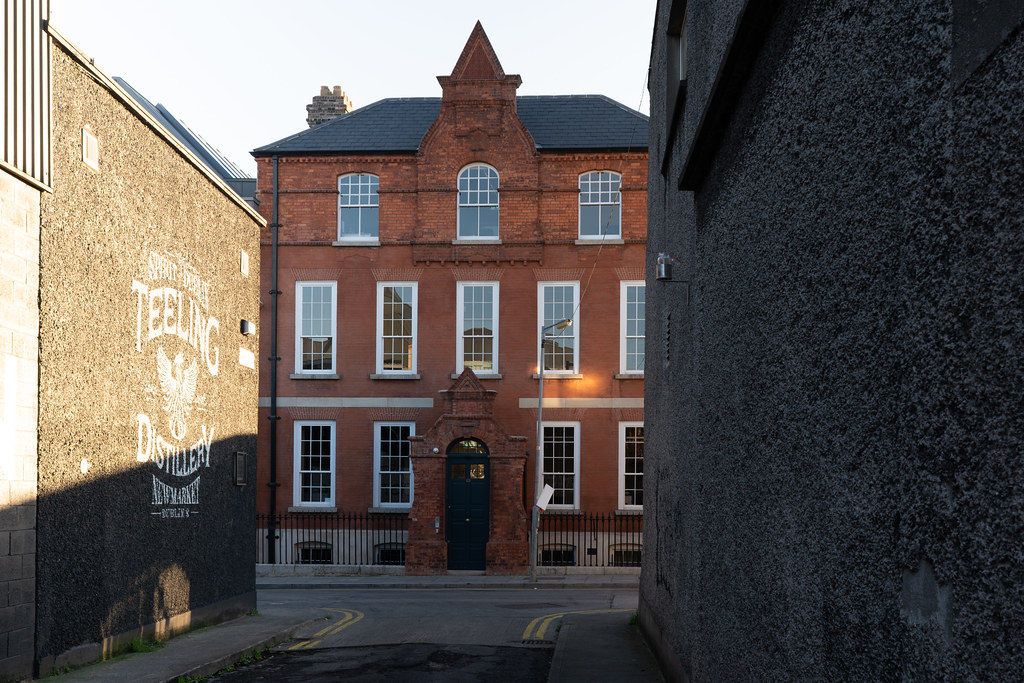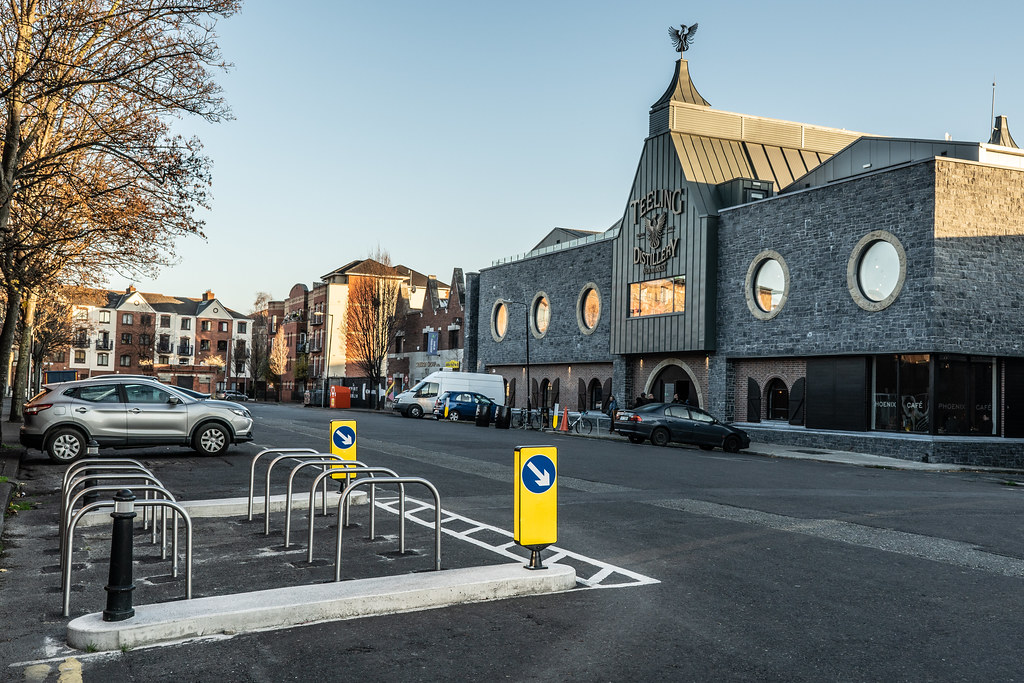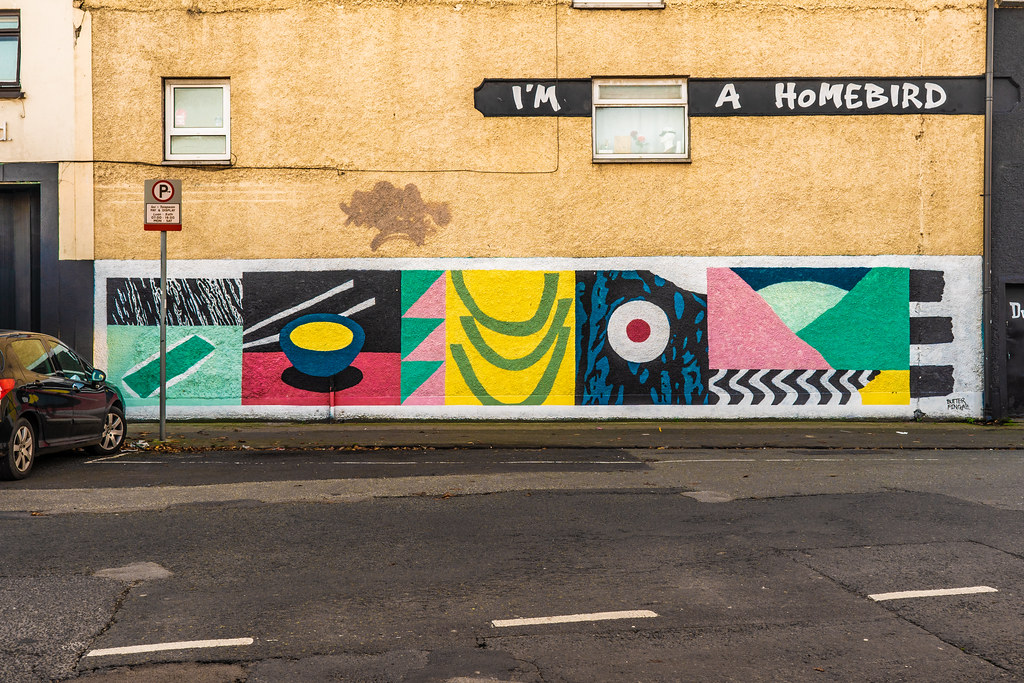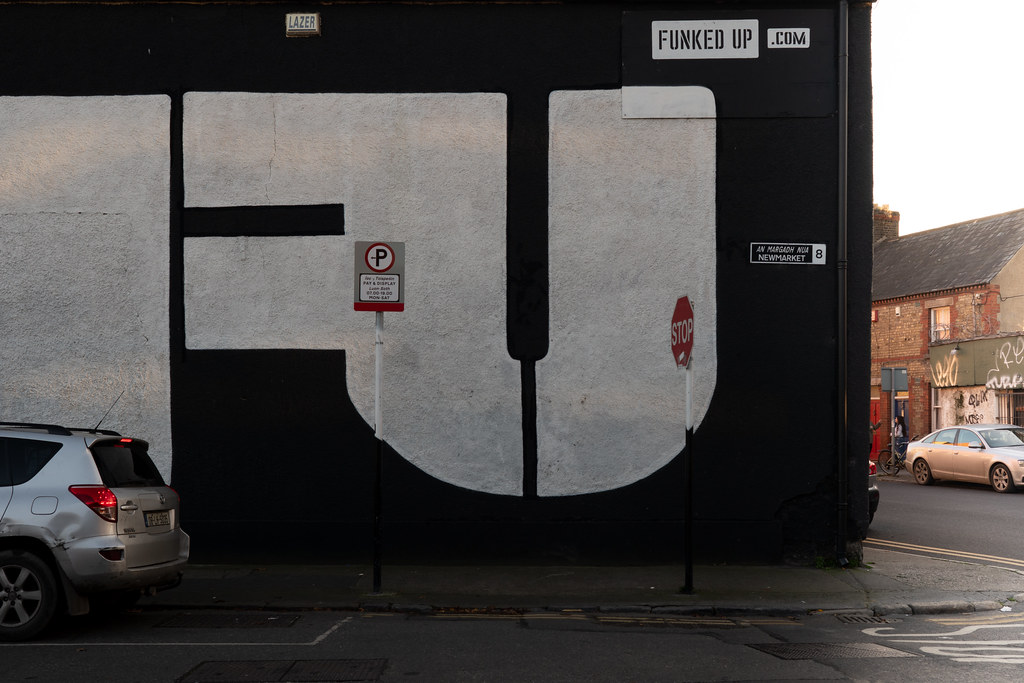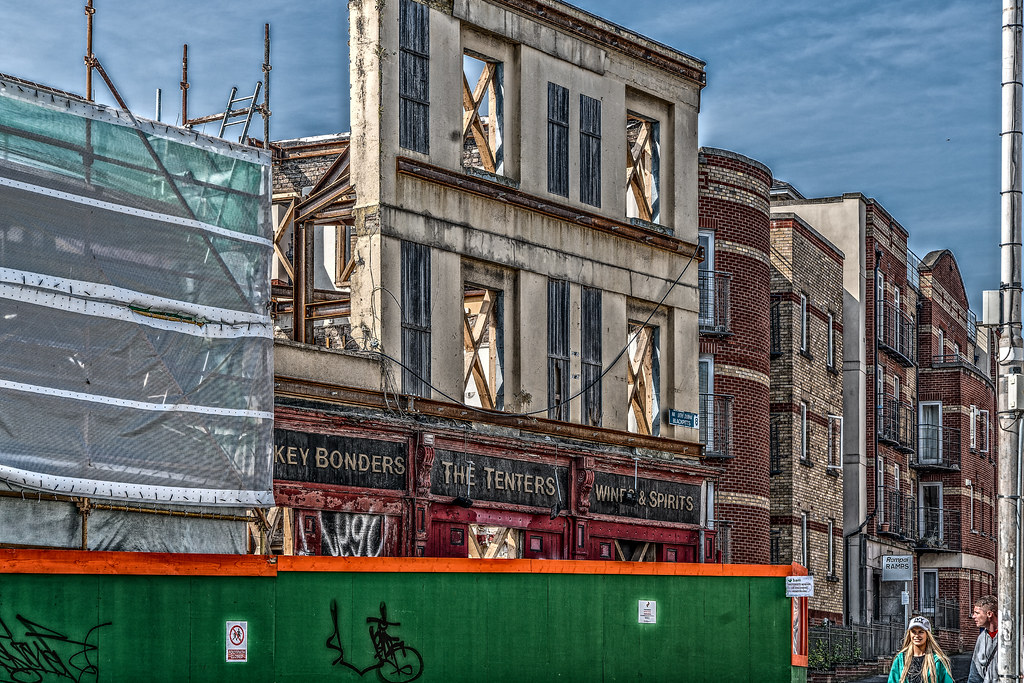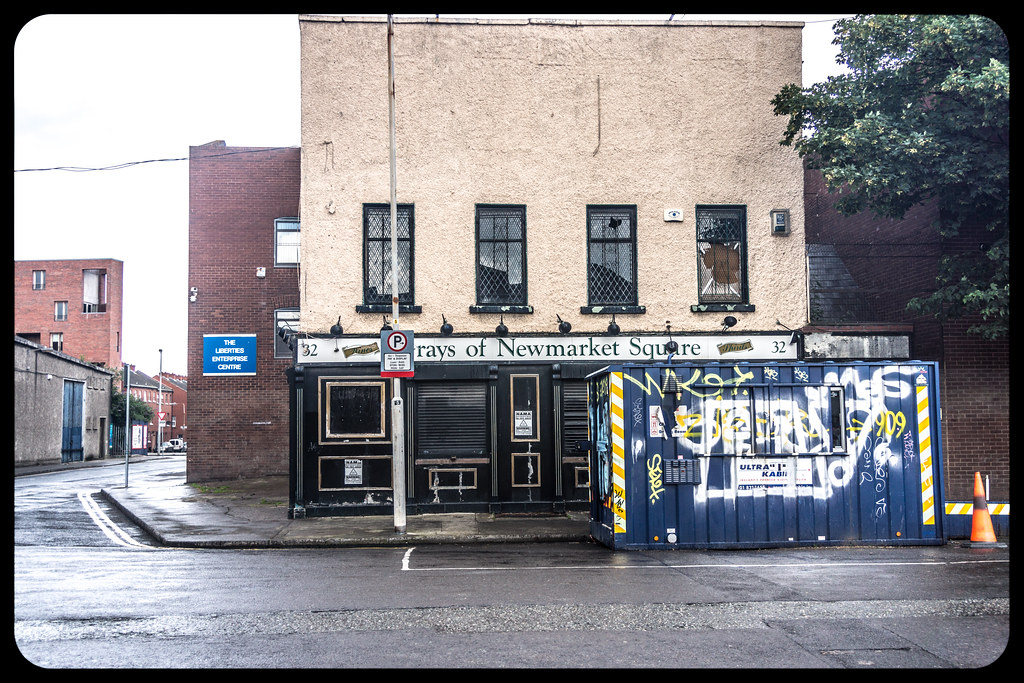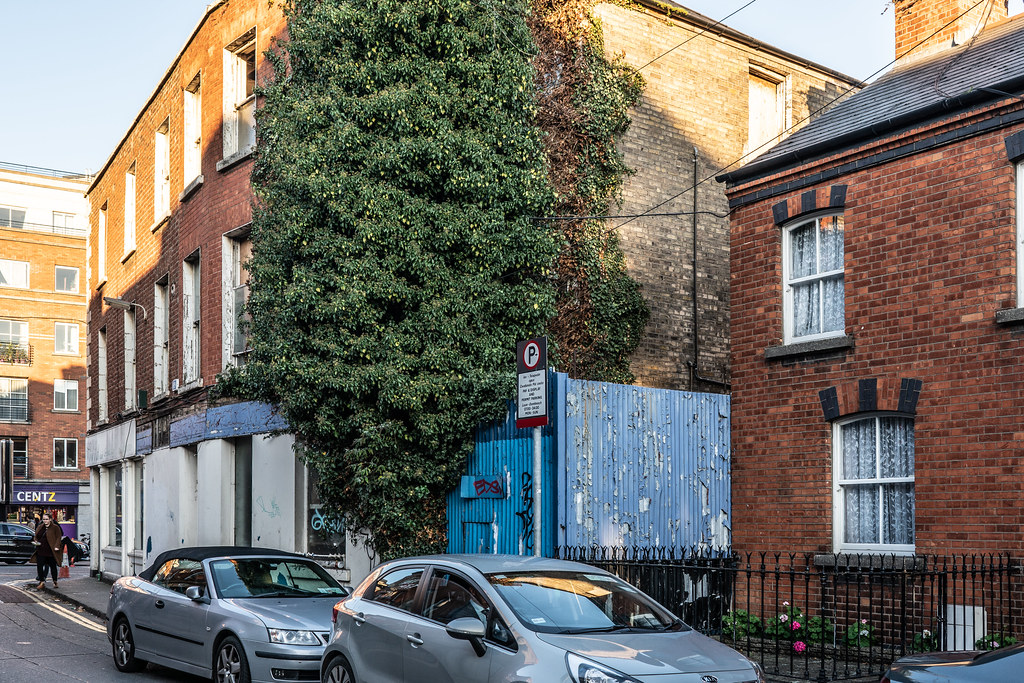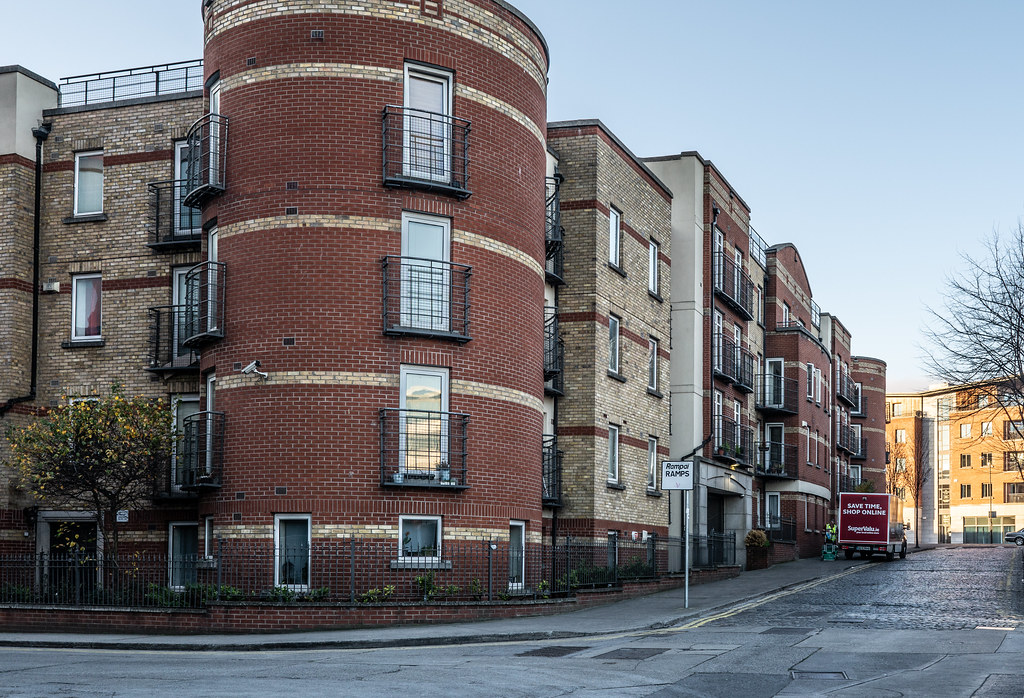BLACKPITTS AREA OF DUBLIN
NEWMARKET SQUARE AND NEARBY [BLACKPITTS AREA OF DUBLIN]
Life in Medieval Dublin was very precarious. In 1348, the city was hit by the Black Death – a lethal bubonic plague that ravaged Europe in the mid-14th century. In Dublin, victims of the disease were buried in mass graves in an area still known as "Blackpitts". Though Archaeological excavations in the past ten years have found evidence of a tanning industry in this area, so the name "Blackpitts" may refer to the tanning pits which stained the surrounding area a deep dark colour. The plague recurred regularly in the city until its last major outbreak in 1649.
The area became the major centre for brewing in Ireland but most of the breweries in the area went out of business in the late eighteenth century when increased taxes made competition with bigger operations impossible. Buildings from late eighteenth and early nineteenth-century breweries, maltings and, to a lesser extent, tanneries, survive today, although they are rapidly disappearing. Examples can be found in Ardee Street, Newmarket and Fumbally Lane.
A few years ago a request for planning permission was submitted for a phased programme of works to reimagine [a word that now appears in every plan that I have seen recently] the central market space as well as a number of adjoining streets and associated structures, and to create a high-quality destination in The Liberties. During a visit in 2017 to the area I was surprised by the amount of development that has taken place and while much of the work was still underway some projects such as Weaver Park had been completed.
I must admit that I was totally unaware of the Newmarket area of Dublin 8 until I undertook a walk guided tour of the area and at the time I was disappointed to discover just how badly the area had been neglected and by the number of derelict buildings and sites. More recently two of the buildings, No 10 Mill Street and the nearby the Methodist Mission Hall have been transformed as part of a large student accommodation development. While the buildings will not accommodate students as they were made available as office space.
Life in Medieval Dublin was very precarious. In 1348, the city was hit by the Black Death – a lethal bubonic plague that ravaged Europe in the mid-14th century. In Dublin, victims of the disease were buried in mass graves in an area still known as "Blackpitts". Though Archaeological excavations in the past ten years have found evidence of a tanning industry in this area, so the name "Blackpitts" may refer to the tanning pits which stained the surrounding area a deep dark colour. The plague recurred regularly in the city until its last major outbreak in 1649.
The area became the major centre for brewing in Ireland but most of the breweries in the area went out of business in the late eighteenth century when increased taxes made competition with bigger operations impossible. Buildings from late eighteenth and early nineteenth-century breweries, maltings and, to a lesser extent, tanneries, survive today, although they are rapidly disappearing. Examples can be found in Ardee Street, Newmarket and Fumbally Lane.
A few years ago a request for planning permission was submitted for a phased programme of works to reimagine [a word that now appears in every plan that I have seen recently] the central market space as well as a number of adjoining streets and associated structures, and to create a high-quality destination in The Liberties. During a visit in 2017 to the area I was surprised by the amount of development that has taken place and while much of the work was still underway some projects such as Weaver Park had been completed.
I must admit that I was totally unaware of the Newmarket area of Dublin 8 until I undertook a walk guided tour of the area and at the time I was disappointed to discover just how badly the area had been neglected and by the number of derelict buildings and sites. More recently two of the buildings, No 10 Mill Street and the nearby the Methodist Mission Hall have been transformed as part of a large student accommodation development. While the buildings will not accommodate students as they were made available as office space.
